Androgenetic alopecia is undoubtedly the most widespread form of hair loss globally. It affects millions of people and often causes significant anxiety, profoundly impacting self-esteem. At the heart of this phenomenon lies a hormone with complex effects: dihydrotestosterone, better known as DHT. Understanding this hormone’s role is essential to comprehend the mechanisms of hair loss and, consequently, the existing treatments to address it.
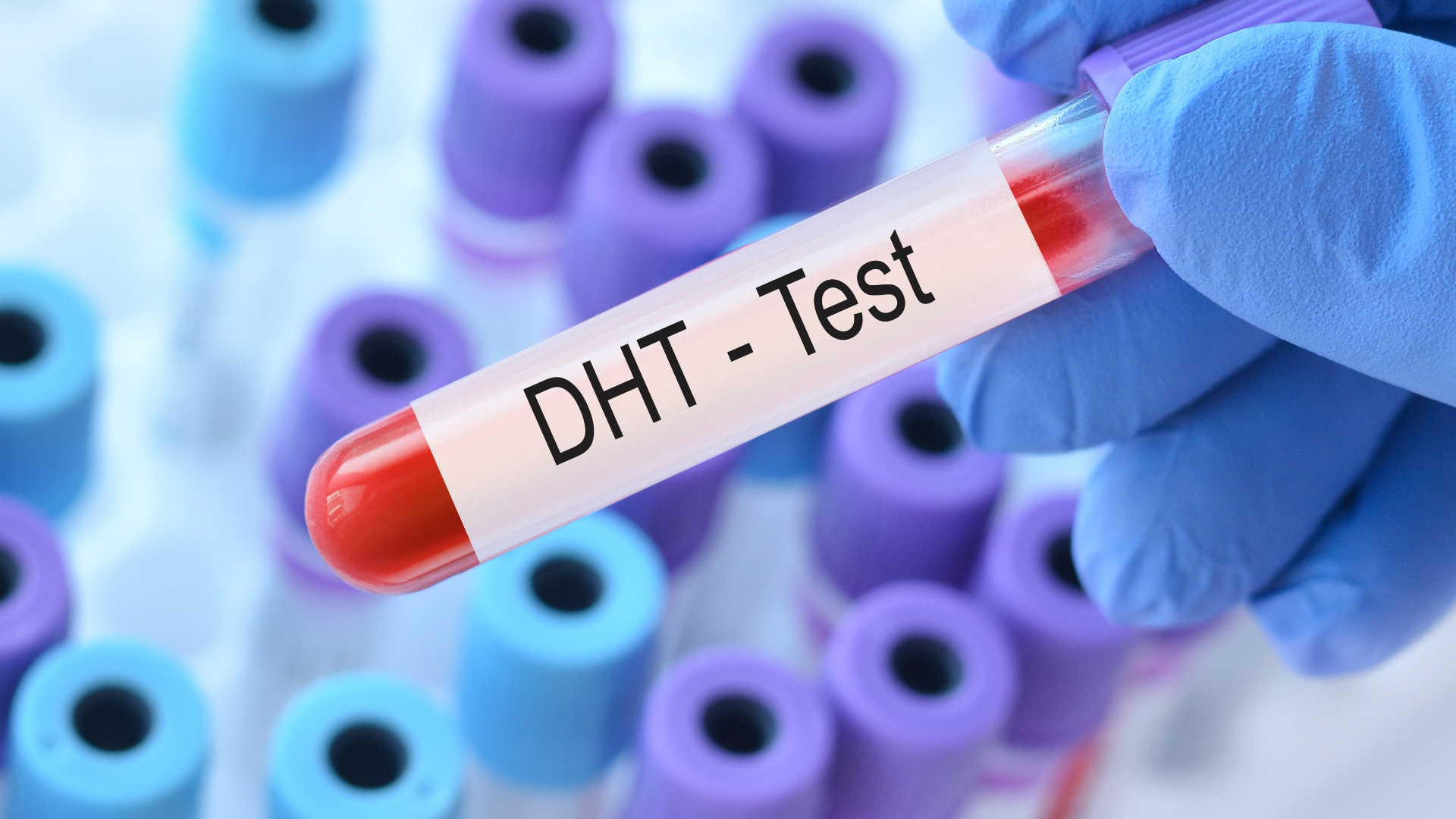
In this article, we’ll take you on a journey into the world of DHT to understand what this hormone is, how it affects hair follicles, why certain individuals are more sensitive than others, and most importantly, what solutions exist today to counter its harmful effects on your hair. From simple routine modifications to medication, including hair transplantation, you’ll discover the range of options available to you.
What is DHT?
DHT is a hormone derived from testosterone, considered one of the primary culprits in androgenetic alopecia. This hormone is produced through the action of an enzyme called 5-alpha reductase, which converts testosterone into DHT. This conversion primarily occurs in specific body tissues, notably the prostate, testicles, hair follicles, and skin.
In both men and women, DHT plays a crucial role during puberty. It contributes to the development of masculine characteristics such as facial hair (beard), pubic hair, muscle development, and body hair. It’s a naturally occurring hormone in the body, and its production is normal and necessary.
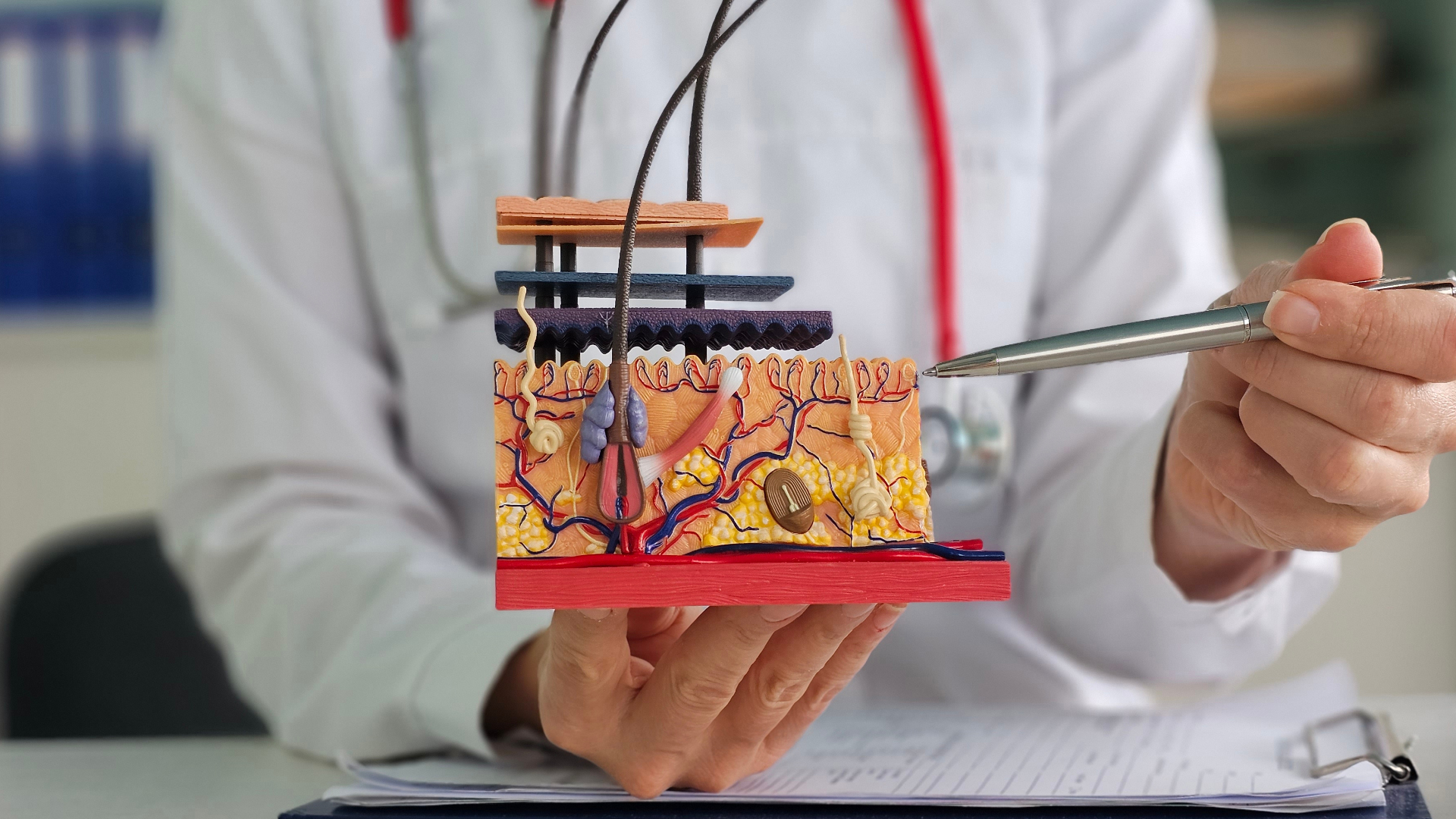
terms of blood concentration, normal DHT levels vary by sex:
- In men: between 0.3 and 0.85 ng/mL (testosterone between 3 and 10 ng/mL)
- In women: between 0.006 and 0.036 ng/mL (testosterone between 0.15 and 0.7 ng/mL)
Interestingly, even at these relatively low levels in women, DHT can cause hair loss in those who are genetically predisposed. It’s less a question of absolute quantity than of hair follicle sensitivity to this hormone.
How DHT Causes Hair Loss
The process by which DHT leads to hair loss is fascinating, albeit unpleasant for those suffering from it. Hair follicles have specific receptors on their surface to which DHT can bind. Once this binding occurs, a cascade of biochemical events begins and progressively disrupts the normal hair growth cycle.
Specifically, DHT acts by shortening the growth phase of hair (anagen phase) and extending the resting (catagen) and shedding phases (telogen). Consequently, hair has less time to grow and falls out more quickly than it’s replaced. This imbalance, over time, becomes visible as thinning hair.
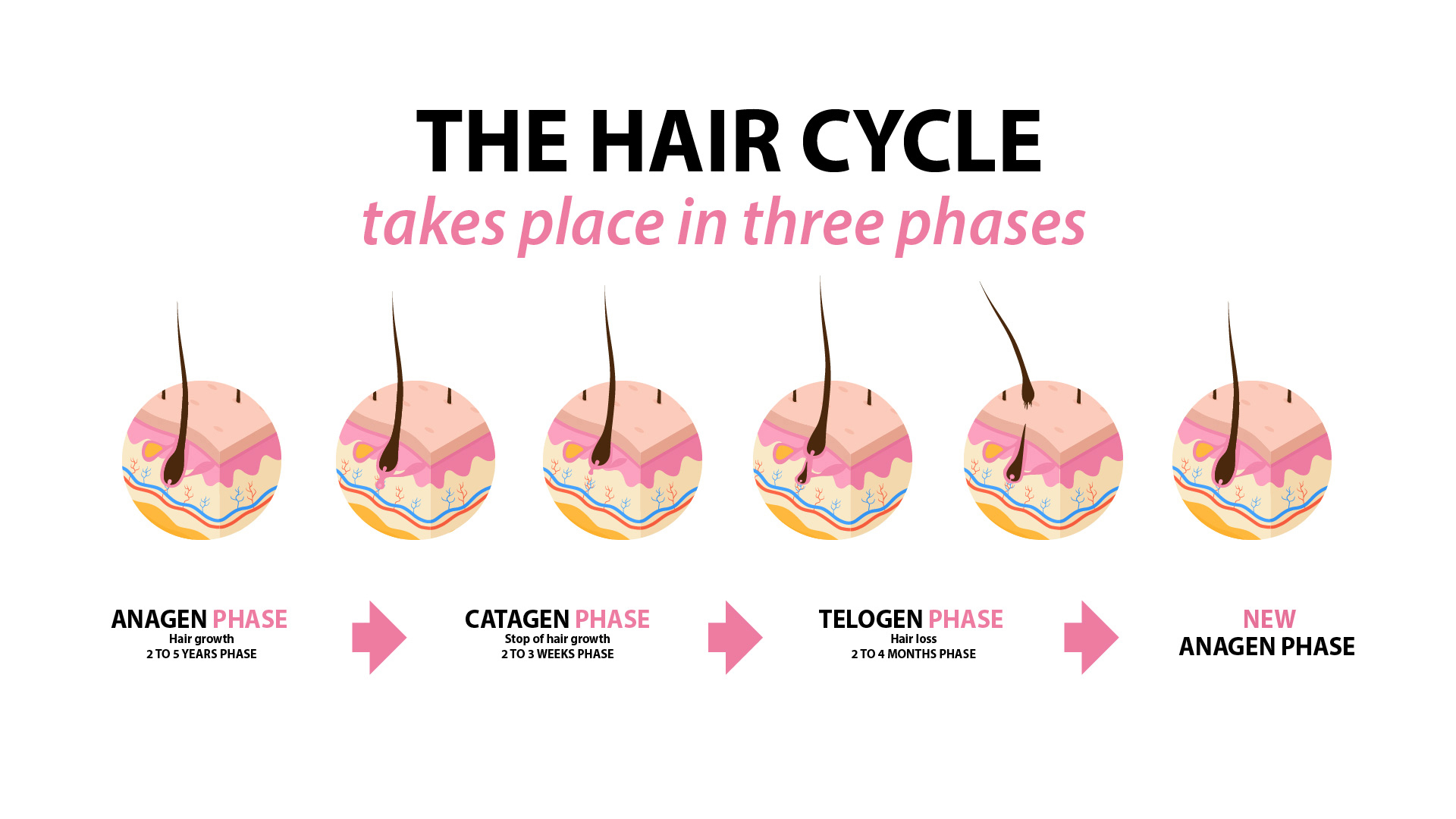
A key phenomenon in this process is what specialists call “miniaturisation” of hair follicles. Under prolonged DHT influence, follicles gradually shrink and produce increasingly fine and short hairs. Eventually, thick and pigmented (terminal) hairs are replaced by fine, colourless hairs (down or vellus). In advanced cases, follicles may become completely inactive, producing no hair at all.
In men, this hair loss typically follows a characteristic pattern described by the Norwood-Hamilton scale. It often begins with a receding hairline at the temples, followed by the appearance of a bald spot on the crown (vertex). Over time, these two areas may meet, leaving only a crown of hair on the sides and back of the head.

In women, the pattern differs and typically follows the Ludwig scale. Hair loss generally manifests as diffuse thinning along the midline of the scalp, with gradual widening of this sparse area. Unlike men, women typically maintain their hairline, even in cases of advanced alopecia.
Why Some People Are More Affected Than Others
DHT-related hair loss doesn’t affect everyone in the same way. Some individuals can maintain dense hair until an advanced age, whilst others begin losing their hair in their twenties. This disparity is primarily explained by two factors: genes and hormones.
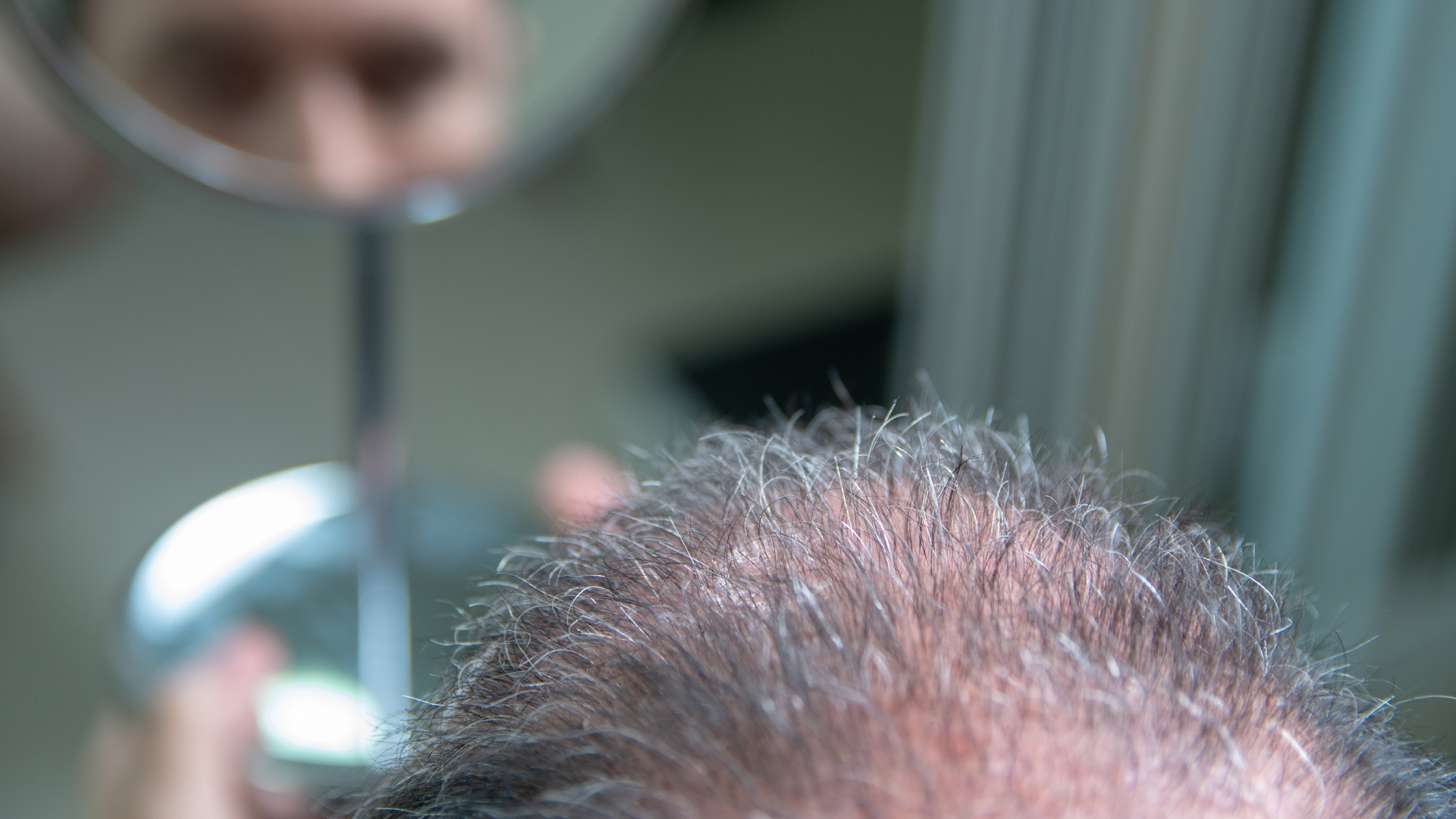
Genetic predisposition plays a predominant role in androgenetic alopecia. This issue is influenced by numerous genes, the most studied being the androgen receptor gene (AR), located on the X chromosome. Specific variations of this gene can determine hair follicles’ sensitivity to DHT’s harmful effects. Studies show that approximately 40% of the genetic risk for androgenetic alopecia could be linked to these AR gene variations.
This genetic component explains why baldness often “runs in the family.” If your father or maternal grandfather suffers from alopecia, you statistically have a higher risk of suffering from it as well. In women, heredity also plays a role, although the mechanisms are somewhat more complex due to the presence of two X chromosomes, one of which is randomly inactivated.
Hormonal imbalances constitute another important factor, particularly in women. Certain conditions such as polycystic ovary syndrome (PCOS) can lead to hyperandrogenism, meaning an excess of male hormones in the female body. This situation promotes androgenetic alopecia in affected women.

For women, menopause also represents a critical period. The decrease in oestrogens, which until then played a protective role against DHT’s effects on hair follicles, can trigger or worsen hair loss in genetically predisposed women.
Other factors can exacerbate the situation, notably:
- Natural ageing of hair follicles
- Chronic stress which can trigger telogen effluvium (temporary hair loss)
- Certain nutritional deficiencies (iron, zinc, B vitamins, proteins)
These elements don’t directly cause androgenetic alopecia but can amplify its effects or accelerate its progression.
Treatments and Solutions to Counter DHT Effects
Faced with DHT-caused hair loss, various therapeutic approaches are possible. Treatments aim either to reduce DHT production, block its action on follicles, or directly stimulate hair regrowth.
Medications Reducing DHT Production
Finasteride (marketed as Propecia) and dutasteride (Avodart) are 5-alpha reductase inhibitors, the enzyme responsible for converting testosterone to DHT. By blocking this conversion, these medications reduce circulating DHT levels and DHT in the scalp.

Finasteride, at a dose of 1 mg daily, has proven effective in men, enabling regrowth in approximately 48% of treated patients. Dutasteride is even more potent, but its use for alopecia remains less widespread. These medications have potential side effects, notably sexual disorders (decreased libido, erectile dysfunction), which limits their use in some patients.
Topical finasteride formulations are currently being developed to limit systemic effects while maintaining local efficacy. Initial studies show promising results, with fewer adverse effects than oral administration.
Medications Blocking DHT Action on Follicles
Spironolactone is an anti-androgen used primarily in women to treat androgenetic alopecia. It works by blocking androgen receptors, preventing DHT from binding to hair follicles. Administered orally at doses of 25 to 200 mg daily, it reduces hair loss and stimulates regrowth in approximately 44% of treated women. Its use in men is limited due to its feminising effects (breast development).
Fluridil is another anti-androgen, available as a 2% topical solution. It acts as a “shield” preventing DHT from binding to hair follicle receptors. Several studies have demonstrated its effectiveness in treating androgenetic alopecia, in both men and women, with good local tolerance.
Topical Treatments Stimulating Regrowth
Minoxidil remains the reference topical treatment for androgenetic alopecia. Its precise mechanism of action isn’t fully understood, but it seems to act as a potassium channel opener, improving local microcirculation and extending the anagen phase of the hair cycle. Applied twice daily as a 2% solution for women and 5% for men, it achieves visible regrowth in 30 to 60% of cases after 6 to 12 months of treatment. It can cause some local side effects (irritation, itching) and must be used long-term to maintain its effectiveness. New topical formulations aim to enhance minoxidil’s effect by combining it with other active ingredients. For example, the combination of 5% minoxidil + 0.1% finasteride in solution has shown superior efficacy to minoxidil alone in a phase 3 clinical trial.
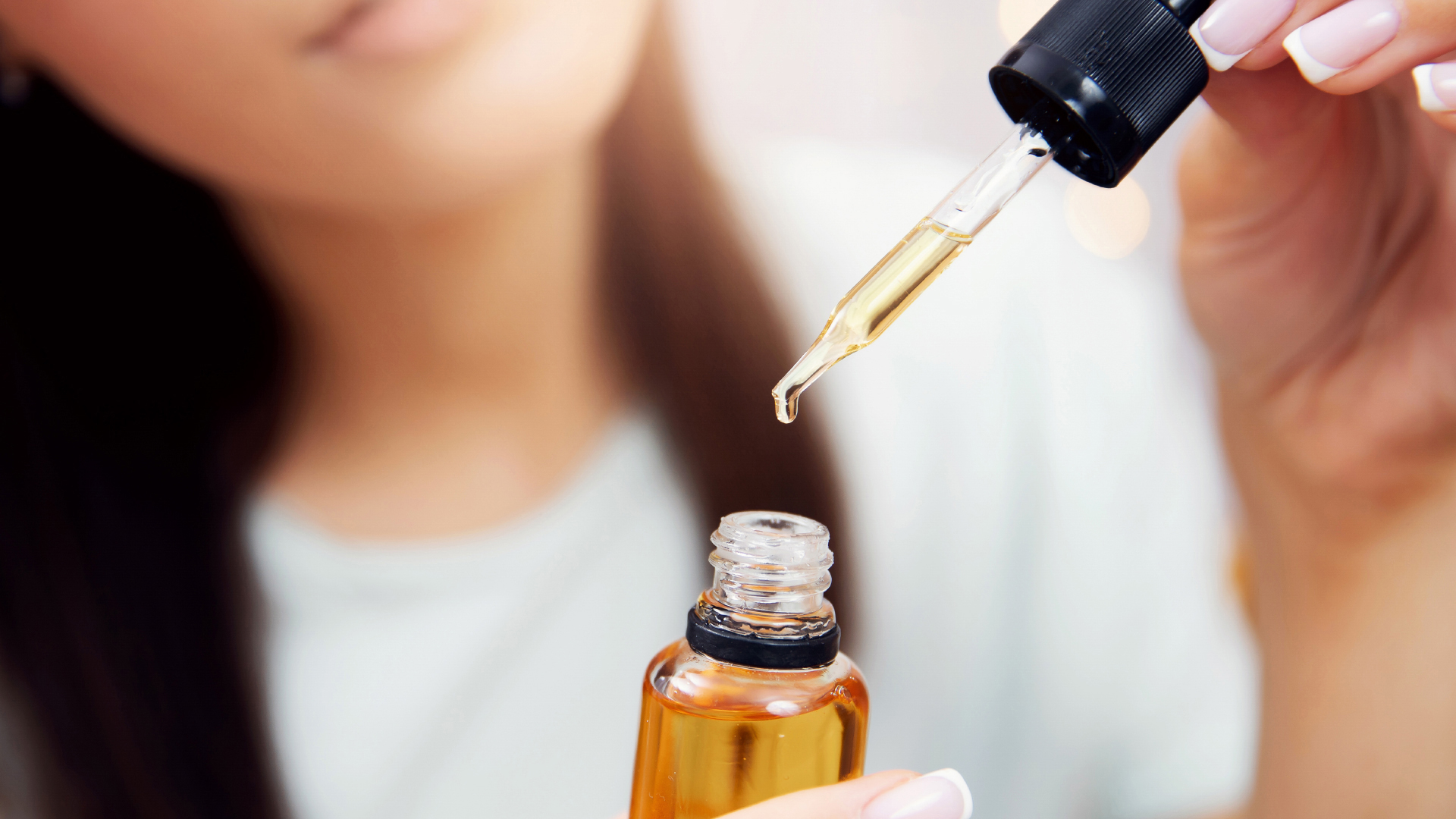
Platelet-rich plasma injections (PRP) constitute an interesting complementary approach. This technique involves drawing the patient’s blood, centrifuging it to extract the platelet-rich plasma, then injecting it into the scalp. Growth factors released by platelets stimulate hair follicle activity and promote regrowth. Clinical studies show an average gain of 30 hairs per cm² after 3 months of treatment.
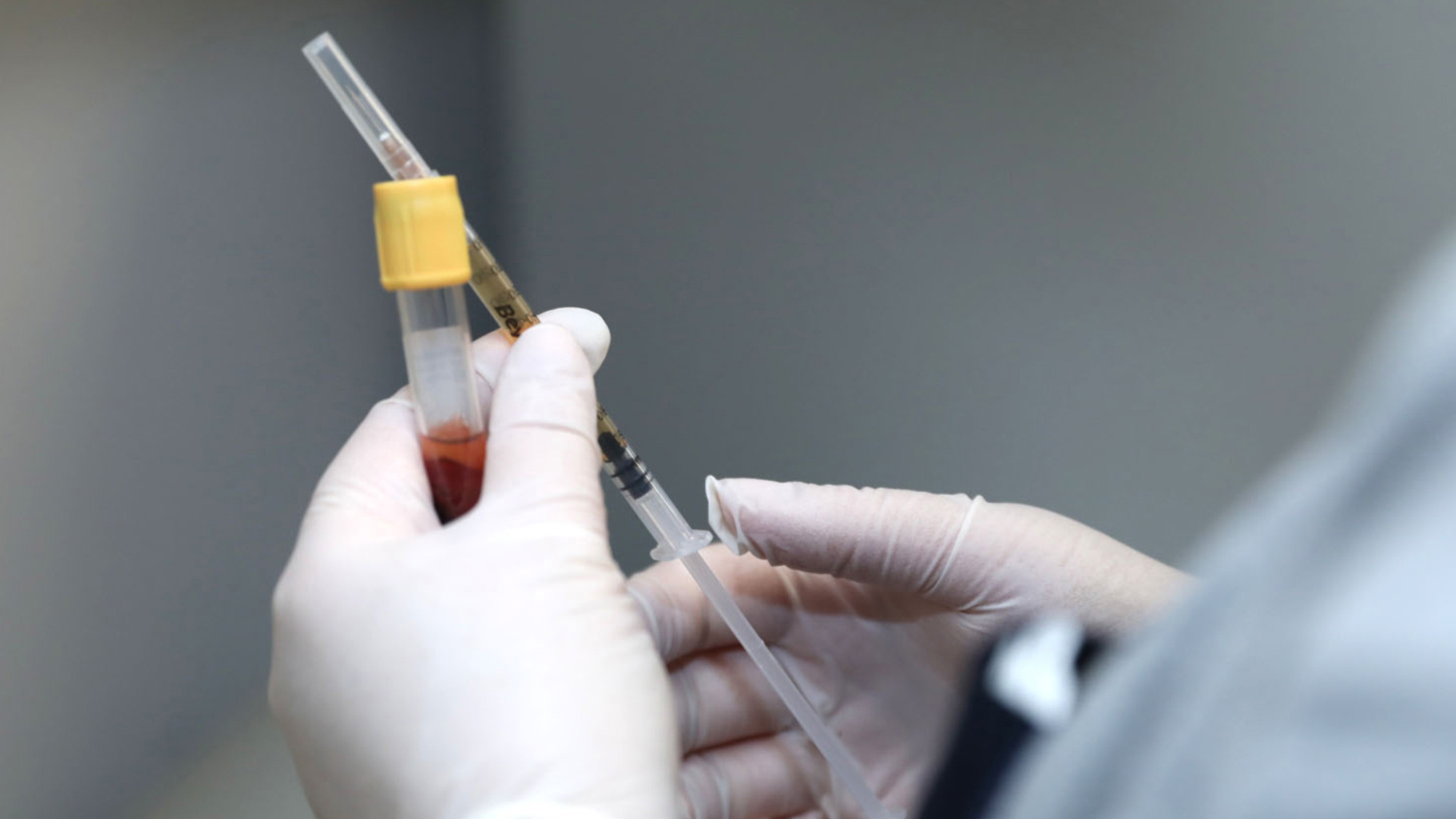
Low-level laser therapy (LLLT) represents a new non-invasive and painless approach to treating androgenetic alopecia. Laser diode devices emit red light that penetrates the scalp, locally increasing ATP production in mitochondria, stimulating microcirculation, and improving hair follicle metabolism. Clinical studies have demonstrated the efficacy and safety of the Hairmax laser comb, equipped with 655 nm diodes to be used 3 times weekly.
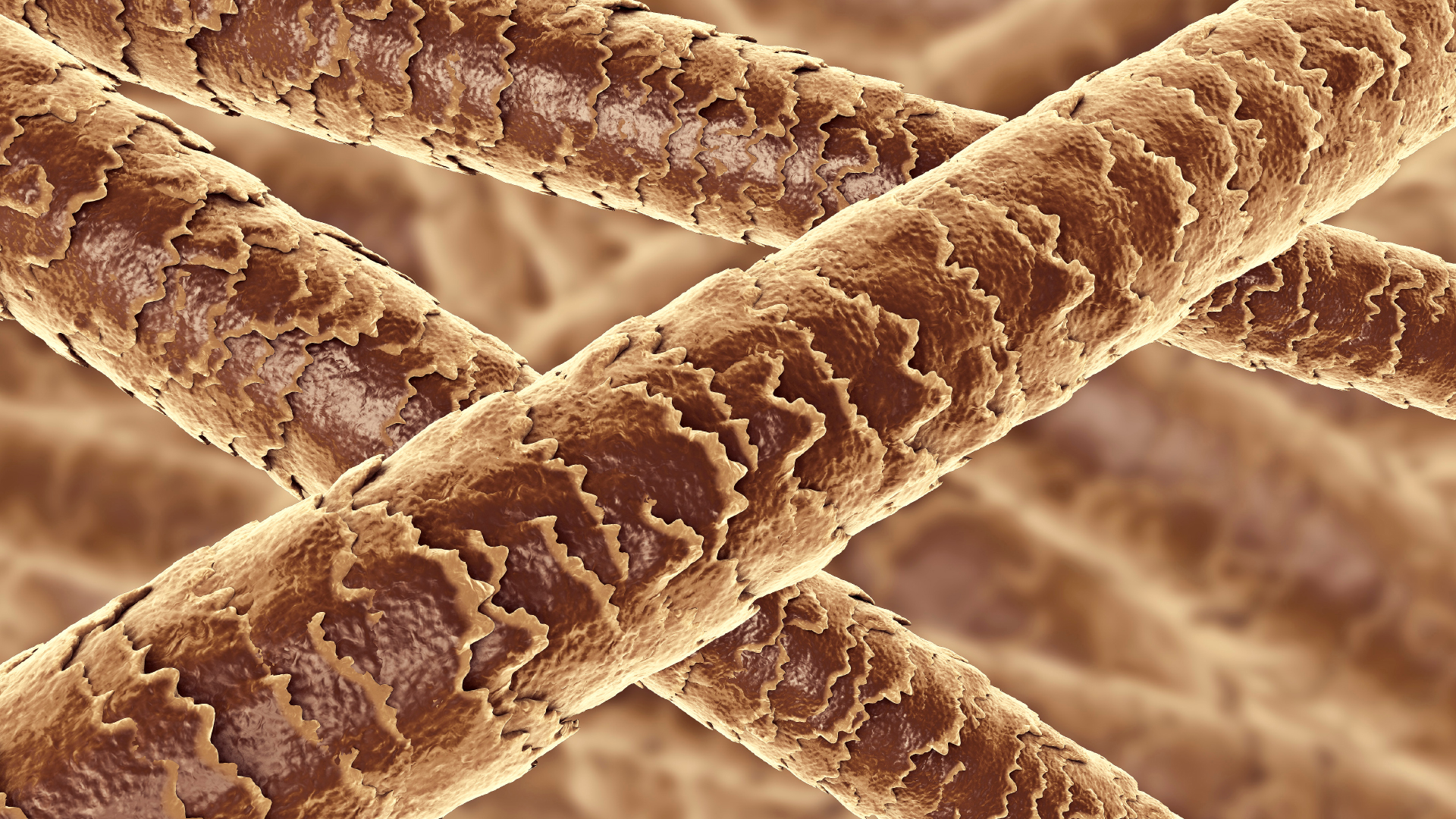
Dietary Supplements and Natural Products
Certain dietary supplements can be useful in cases of deficiency to slow hair loss and promote regrowth. Supplementation with B vitamins (B7 or biotin, B6, B12), iron, and zinc is often recommended in cases of deficiency. Vitamin D also plays a key role in the hair cycle via the vitamin D receptor (VDR) expressed in hair follicles.
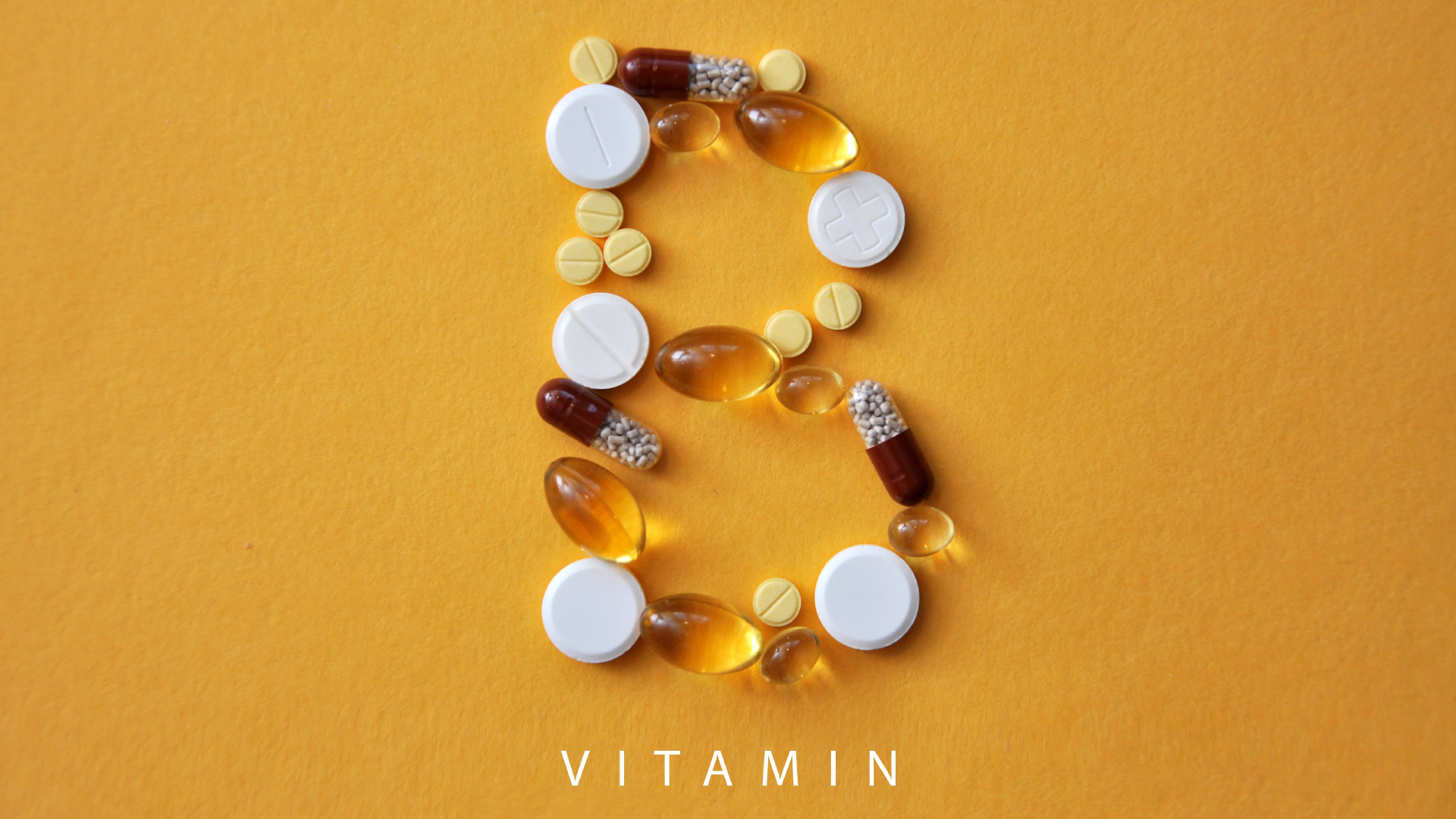
Plant extracts are frequently offered in capsules or powder form for their hair loss-reducing and growth-stimulating properties:
- Saw palmetto (Serenoa repens) and pumpkin seeds are reputed to inhibit 5-alpha reductase
- Green tea contains catechins such as epigallocatechin gallate (EGCG) with anti-androgenic effects
- Liquorice root extract, rich in glabridin, could improve blood circulation to the follicles
- Melatonin, capsaicin, or curcumin can promote regrowth by stimulating circulating levels of growth factors
Hair Transplantation: An Effective Solution for Significant Hair Loss
When androgenetic alopecia is already quite visible, hair transplantation represents the best option for sustainable hair restoration. This procedure involves harvesting hair follicles one by one from DHT-resistant areas (the donor area located at the back of the head), then reimplanting them in areas affected by baldness.
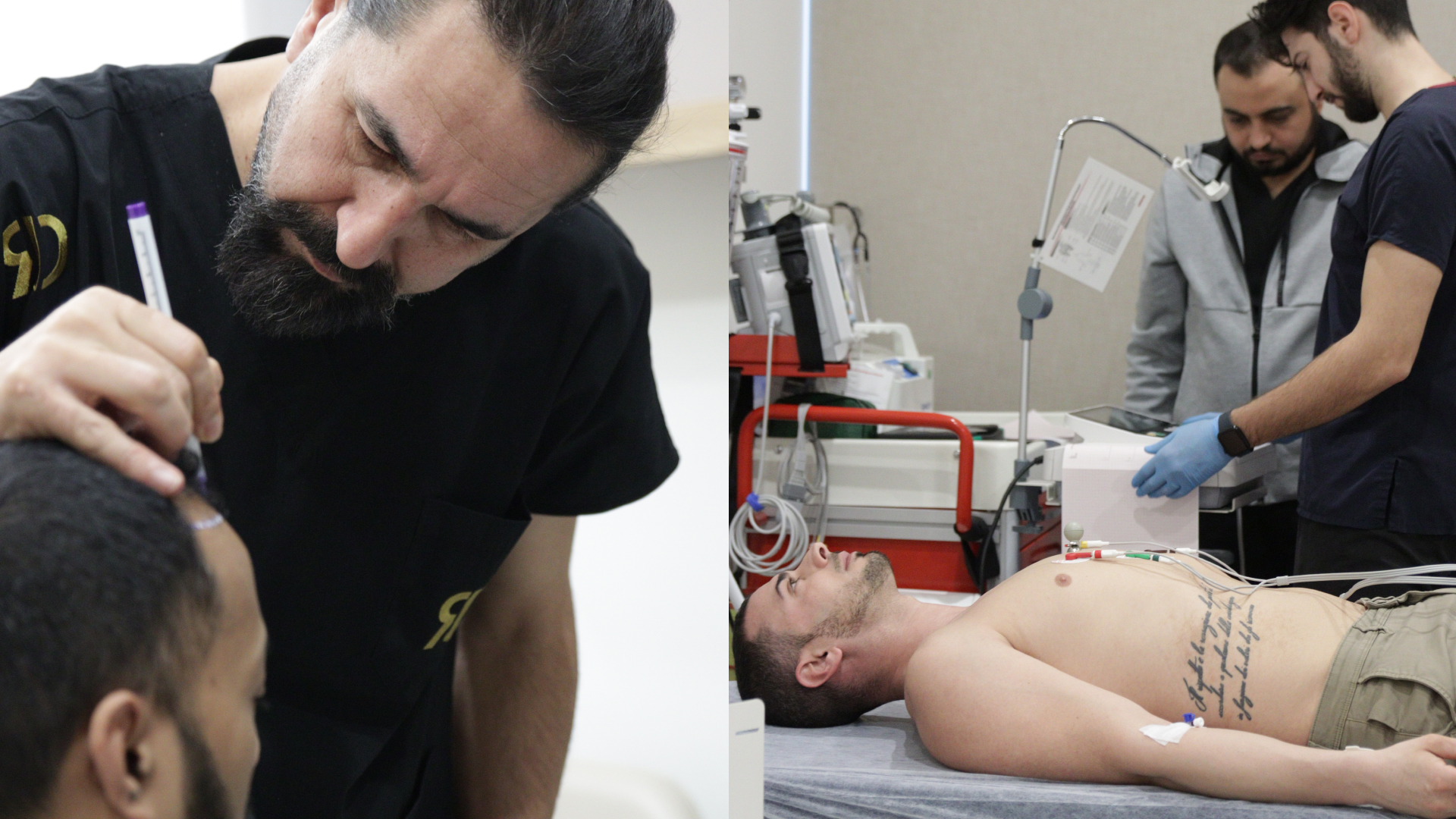
Harvesting is now performed using the FUE (Follicular Unit Extraction) technique, using a punch 0.7 to 1 mm in diameter. Each harvested graft contains 1 to 4 hairs. The DHI (Direct Hair Implantation) technique then allows grafts to be implanted one by one using an implanter pen without prior incision, for a very natural result.
Hair transplantation has the advantage of permanently restoring hair in cases of significant alopecia. Transplanted follicles retain their DHT resistance, a characteristic of their original area. This procedure is particularly recommended for men with stage 3 to 6 alopecia on the Norwood scale and for women with significant hair loss at the vertex.
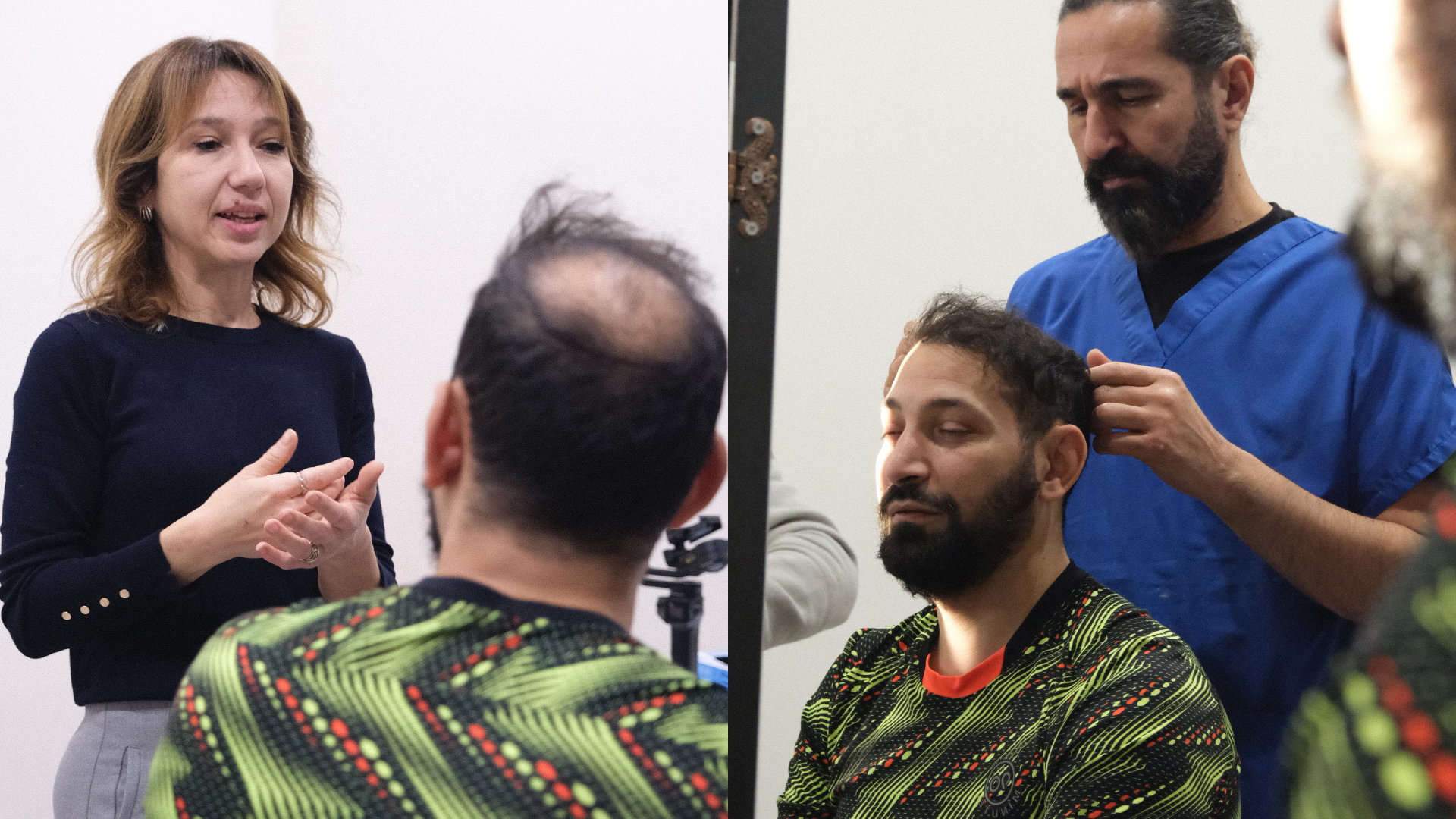
It’s important to note that the success of a hair transplant largely depends on the surgeon’s expertise and the quality of the clinic where the procedure is performed. That’s why choosing a specialised and recognised centre is crucial.
Body Expert: Focus on Hair Transplantation
Faced with androgenetic alopecia, more and more people are turning to Turkey for hair transplantation. Our agency has established itself as a leader in this field, offering comprehensive and personalised solutions to patients worldwide.
Body Expert’s story is particularly inspiring, as it was born from the personal experience of our founder, Burak Engineri. Formerly bald himself, Burak entrusted his scalp to a team of specialists in Istanbul before launching his own agency. This transformation marked the beginning of an entrepreneurial adventure with his wife Fiona, a medical photographer he met during the operation. With over twenty years of experience in tourism, Burak wanted to offer a humane, high-end, and transparent approach to medical tourism.

Our agency distinguishes itself through personalised support, from first contact to post-operative follow-up. We rigorously select the best hair surgeons in Istanbul, all internationally accredited and trained, working in clinics meeting European standards. The rates offered are 50 to 80% lower than in France or Switzerland, without compromising on the quality of care.
Our all-inclusive packages include transfers from the airport, accommodation in quality hotels, the presence of a French-speaking interpreter, complete organisation of the stay, and medical follow-up over several months. This level of attention and service makes all the difference for patients embarking on this often stressful adventure.
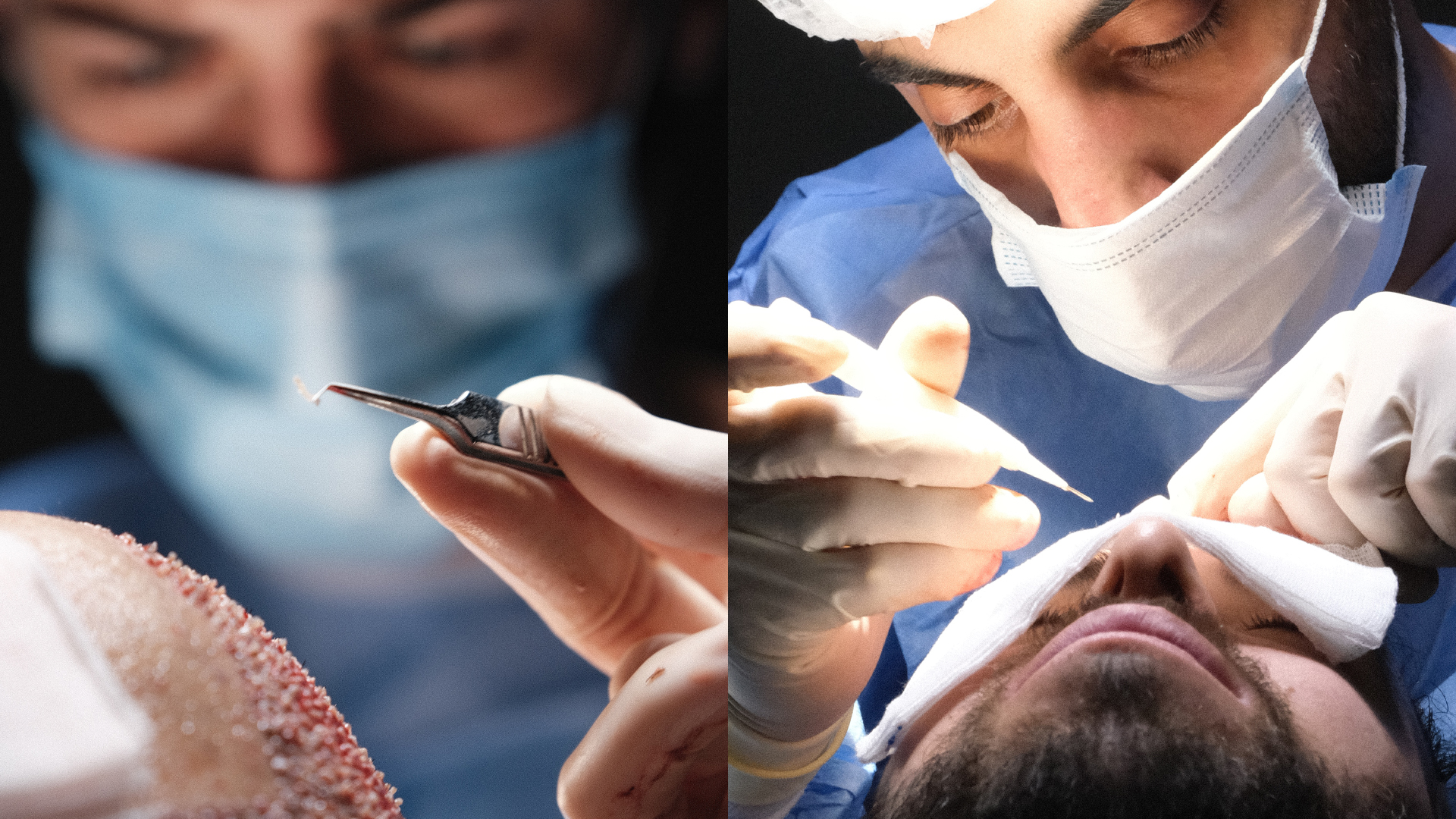
Among the techniques offered by our team are:
- FUE (Follicular Unit Extraction)
- DHI (Direct Hair Implantation)
- PRP (Platelet-Rich Plasma) as a complementary treatment
- Micro-pigmentation for non-surgical solutions
- The Sapphire FUE technique using sapphire instruments for greater precision
The patient journey begins with a personalised diagnosis based on photos and exchanges with a specialist, followed by planning the stay in Istanbul. The Body Expert team handles all logistical aspects and accompanies the patient throughout the process, including after returning home, with medical follow-up that can last up to ten years depending on the procedure.
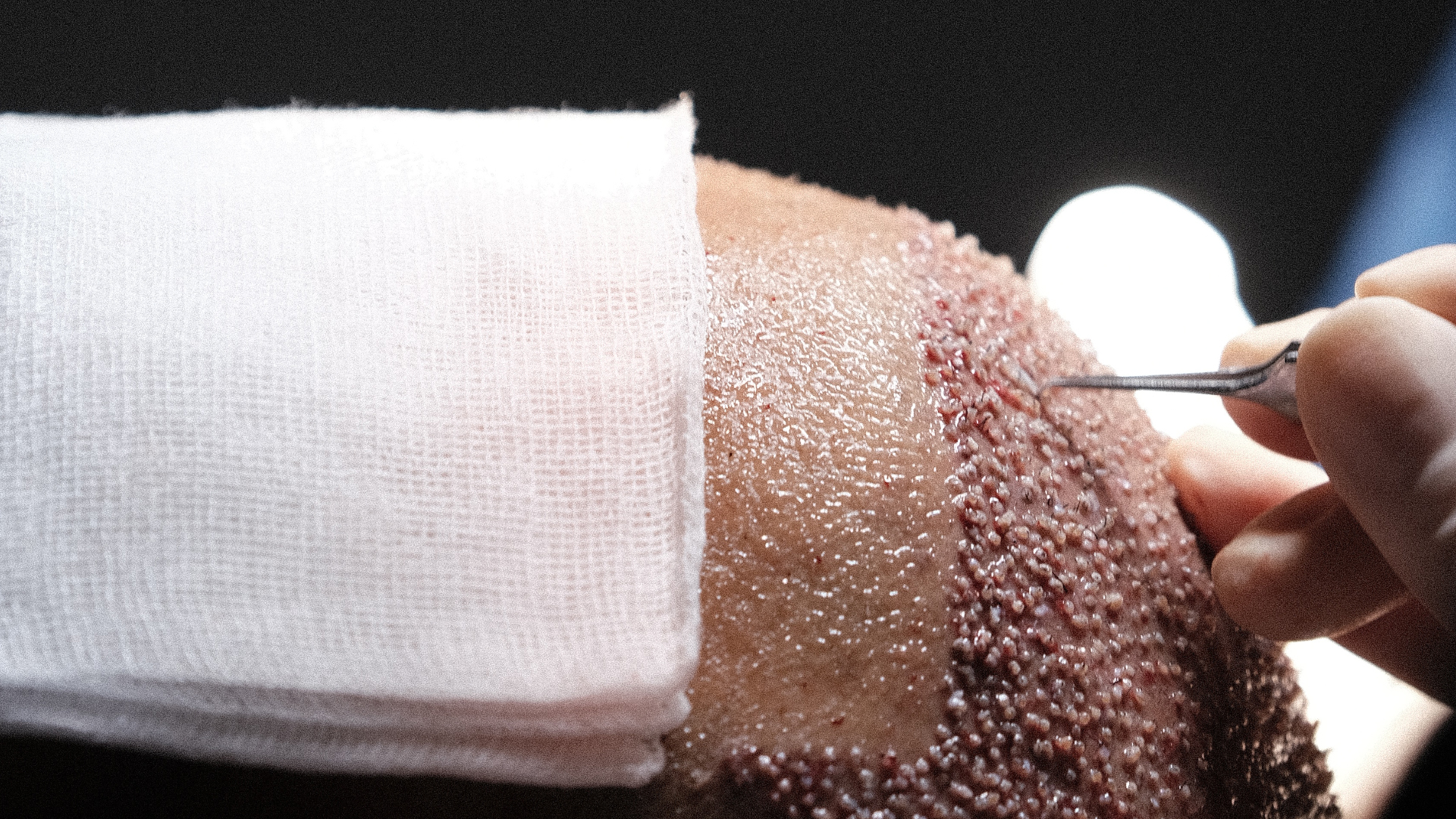
Our patients’ testimonials perfectly illustrate the quality of this support. As Cyril, who benefited from a FUE transplant of 3500 grafts, shares: “I was taken care of by Body Expert, by Sibel exactly, who had already explained everything to me well before the operation. The care, when I arrived in Turkey with my wife, was top-notch. The procedure went very well! I am very satisfied with the result. I highly recommend them.”
To see concrete results, don’t hesitate to consult our numerous before-after hair transplant photos in our gallery.
Conclusion
DHT plays a central role in androgenetic alopecia, the most common form of hair loss affecting millions of people worldwide. This hormone, derived from testosterone, disrupts the hair growth cycle and causes progressive miniaturisation of hair follicles in genetically predisposed individuals.
Fortunately, several treatments exist today to counter DHT’s effects and promote hair regrowth. Medications such as finasteride and spironolactone work by reducing DHT production or blocking its action on hair follicles. Topical solutions like minoxidil directly stimulate hair growth. Dietary supplements and certain plant extracts can also play a complementary role.
When hair loss is already well advanced, hair transplantation remains the most effective solution for sustainable restoration. This procedure, performed by specialists such as those selected by our team in Turkey, allows DHT-resistant follicles to be transplanted to areas affected by baldness.
Understanding the mechanisms of DHT-related hair loss now allows for better targeting of treatments and offering solutions adapted to each patient. Whether preventing the progression of alopecia or restoring already thinned hair, options exist for all stages and all budgets.
Faced with this issue that profoundly affects self-esteem, the human and personalised support we offer makes all the difference. Because beyond the purely medical aspect, psychological support is also needed by people facing hair loss.
Sources
Ellis, J. A., Stebbing, M., & Harrap, S. B. (2001). Polymorphism of the androgen receptor gene is associated with male pattern baldness. Journal of Investigative Dermatology, 116(3), 452-455. https://doi.org/10.1046/j.1523-1747.2001.01261.x
Kaufman, K. D. (2002). Androgens and alopecia. Molecular and Cellular Endocrinology, 198(1-2), 89-95. https://doi.org/10.1016/S0303-7207(02)00372-6
Olsen, E. A. (1999). The midline part: an important physical clue to the clinical diagnosis of androgenetic alopecia in women. Journal of the American Academy of Dermatology, 40(1), 106-109. https://doi.org/10.1016/S0190-9622(99)70539-6
Randall, V. A. (2008). Androgens and hair growth. Dermatologic Therapy, 21(5), 314-328. https://doi.org/10.1111/j.1529-8019.2008.00214.x
Sawaya, M. E., & Price, V. H. (1997). Different levels of 5alpha-reductase type I and II, aromatase, and androgen receptor in hair follicles of women and men with androgenetic alopecia. Journal of Investigative Dermatology, 109(3), 296-300. https://doi.org/10.1111/1523-1747.ep12335779
Trüeb, R. M. (2002). Molecular mechanisms of androgenetic alopecia. Experimental Gerontology, 37(8-9), 981-990. https://doi.org/10.1016/S0531-5565(02)00093-1
Urysiak-Czubatka, I., Kmieć, M. L., & Broniarczyk-Dyła, G. (2014). Assessment of the usefulness of dihydrotestosterone in the diagnostics of patients with androgenetic alopecia. Advances in Dermatology and Allergology, 31(4), 207-215. https://doi.org/10.5114/pdia.2014.40925
Ustuner, E. T. (2013). Cause of androgenic alopecia: Crux of the matter. Plastic and Reconstructive Surgery Global Open, 1(7), e64. https://doi.org/10.1097/GOX.0000000000000005
4314 vues
0 commentaires
0


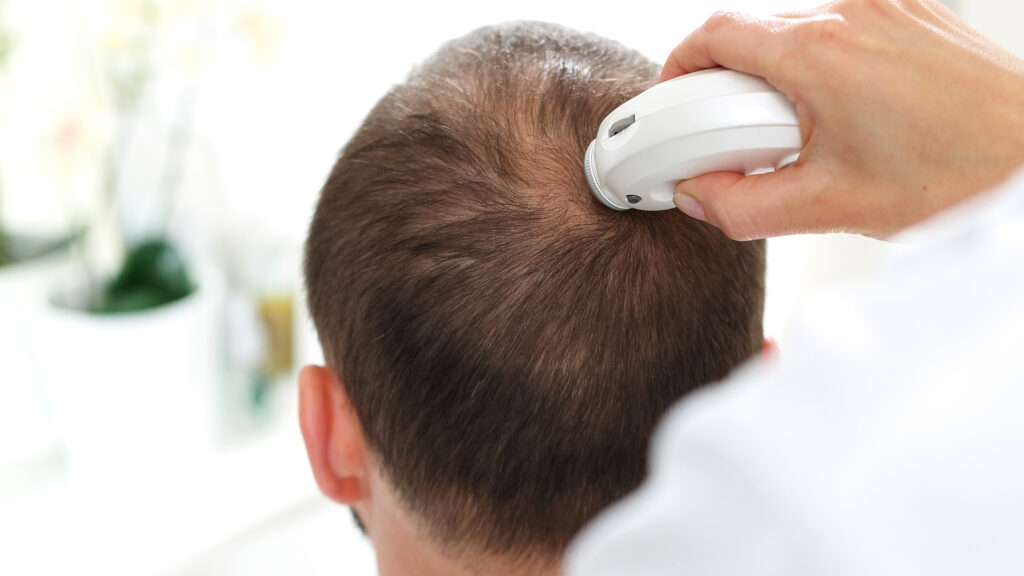
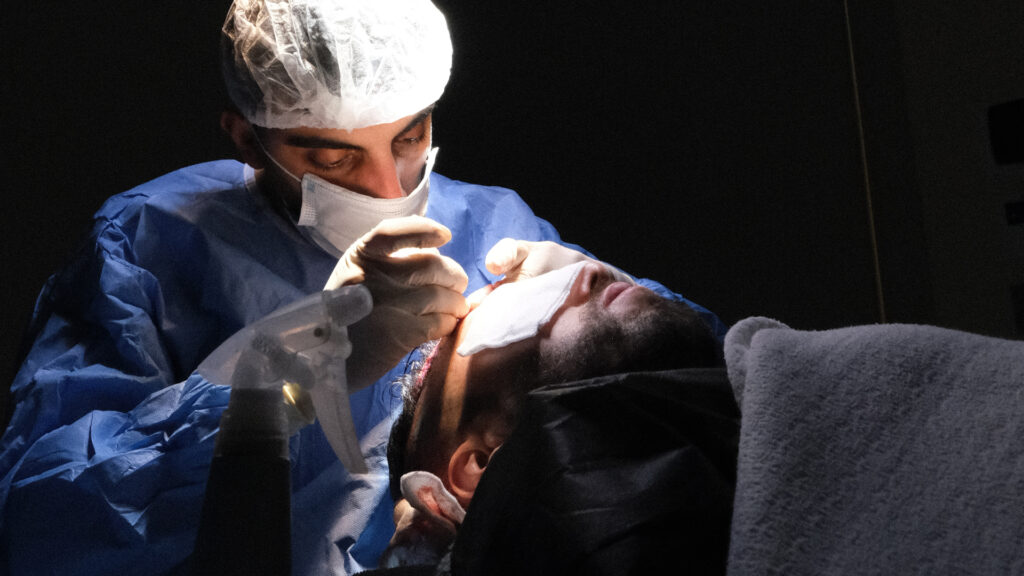
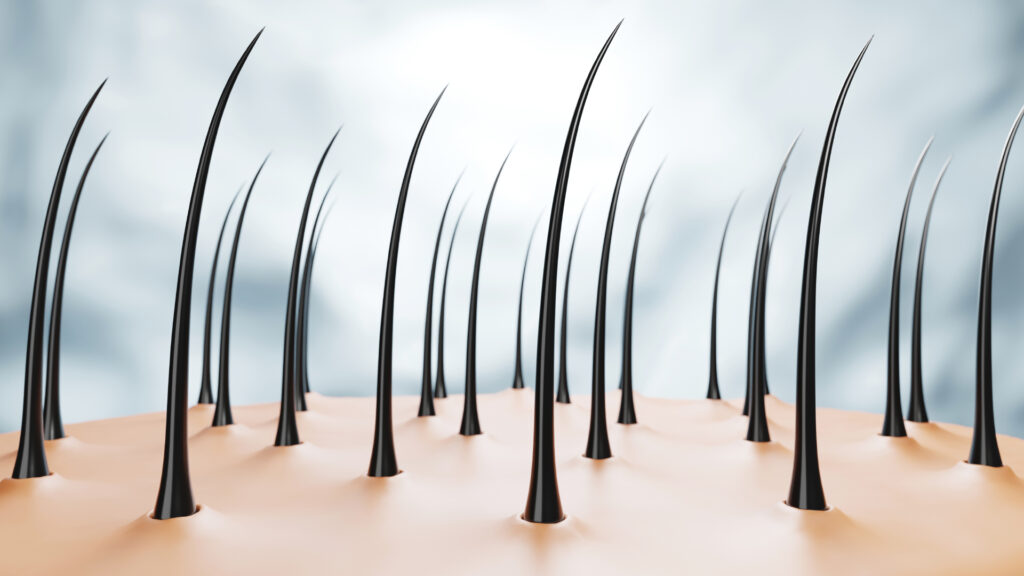

Il n'y a pas de commentaires pour le moment.